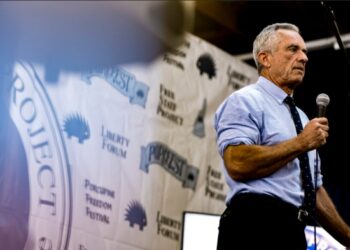As of Thursday morning, President Donald J. Trump is preparing to sign what Steve Bannon and economist Joe LaVorgna are calling the most ambitious supply-side economic package in decades: the "One Big Beautiful Bill.” This legislation, set to be signed just ahead of the Fourth of July celebrations, is the product of intense, direct presidential leadership. President Trump personally whipped the votes needed, reportedly calling recalcitrant House members as late as 2:30 a.m. to get it across the finish line. The Senate version will pass as-is, eliminating the need for another round of debate. This is now a done deal—and according to LaVorgna, the economic consequences could be seismic.
Quick Clip:
JOE LAVORGNA: CBO’s pessimistic growth estimate ignores real productivity gains under Trump.
3% growth means $1 trillion in new revenue and stronger markets.
Growth assumptions drive everything. Miss that, and the numbers fail. pic.twitter.com/KDqWHUzAVW
— Bannon’s WarRoom (@Bannons_WarRoom) July 3, 2025
The bill’s centerpiece is a full-throttle bet on American productivity, capital investment, and small business expansion. LaVorgna emphasized that the Congressional Budget Office (CBO) has long relied on pessimistic growth projections, assuming the U.S. economy is stuck at a 1.8% growth rate. In contrast, he points to historical data under Trump’s first term, where real GDP hovered closer to 3%, with productivity accelerating annually. "Three percent,” he said, "is the right number going forward,” especially with the tools this bill unleashes.
Those tools include full expensing for capital equipment, doubled depreciation deductions, and significant regulatory rollbacks that will allow faster permitting and unleash energy production. These changes, LaVorgna explains, directly benefit small businesses—the backbone of the American economy, which generate 40% of national employment. Combined with tariffs that incentivize domestic manufacturing, this package aims to re-shore production, drive job creation, and boost wages from the ground up.
One critical point LaVorgna raised is how wrong the CBO has been in the past, underestimating Trump’s initial tax reforms and misjudging economic multipliers. This time, he warns, the CBO’s latest $2.5 trillion deficit projection is fundamentally flawed. It fails to account for growth effects, foreign capital inflows, or the impending surge in artificial intelligence (AI) productivity. Bond markets seem to agree: yields have fallen by half a point since January, equity markets are rising, and credit spreads remain tight—all indicating investor confidence in stronger growth ahead.
LaVorgna also highlighted key indicators that confirm momentum. Private-sector work hours are up nearly 2%, reaching a two-and-a-half-year high, supporting the case for 3% Q2 GDP growth. Construction employment jumped by 15,000 jobs last month, and structural investment is trending upward. Equipment investment increased by over 20% in Q1, a sign that businesses are positioning themselves for long-term expansion.
Bannon noted the deep integration of this legislation with President Trump’s America First agenda. Tariffs, energy dominance, deregulation, and AI-readiness are all unified in this bill. The left has traditionally evaluated these provisions in isolation, but LaVorgna argues that this is a mistake. It’s the synergy among all elements—tariffs, tax cuts, deregulation, and AI-era investment —that will spark durable growth.
For more context, watch this whole WarRoom segment:
LAVORGNA: "CBO’s Pessimistic Growth Estimate Ignores Real Productivity Gains Under Trump”





![Bannon’s WarRoom, Show Clip Roundup 11/7/2024 [AM]](https://warroom.org/wp-content/uploads/2024/11/WarRoom-Logo-75x75.jpg)